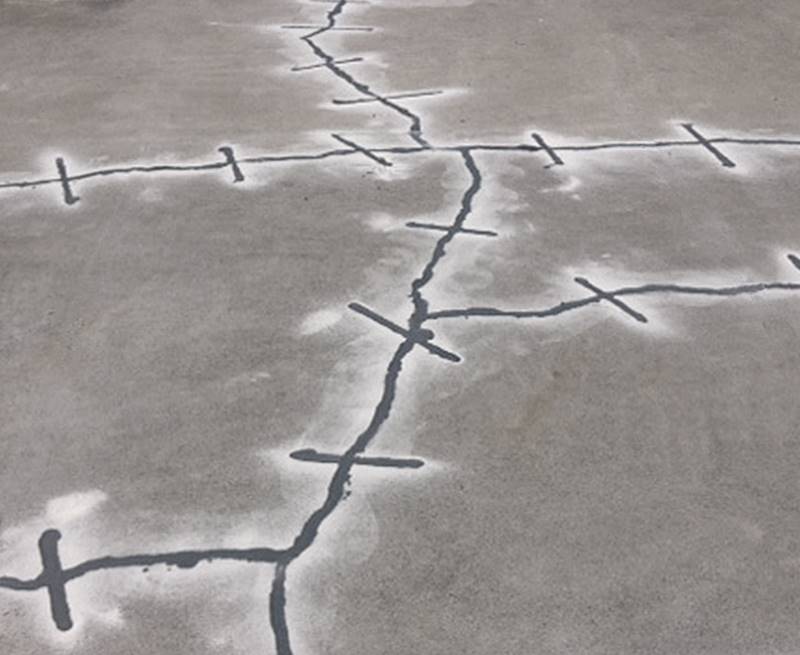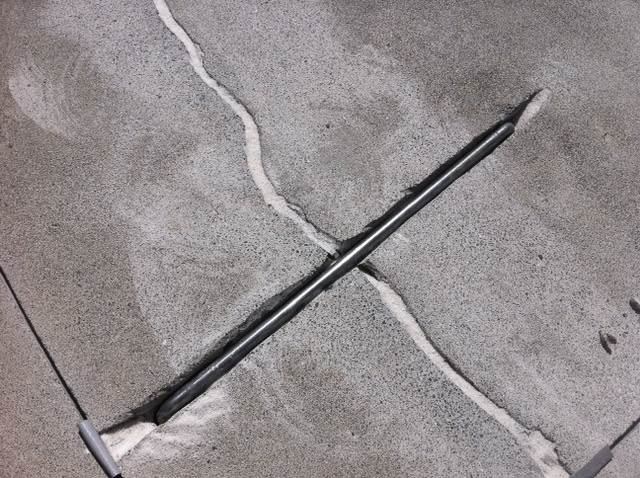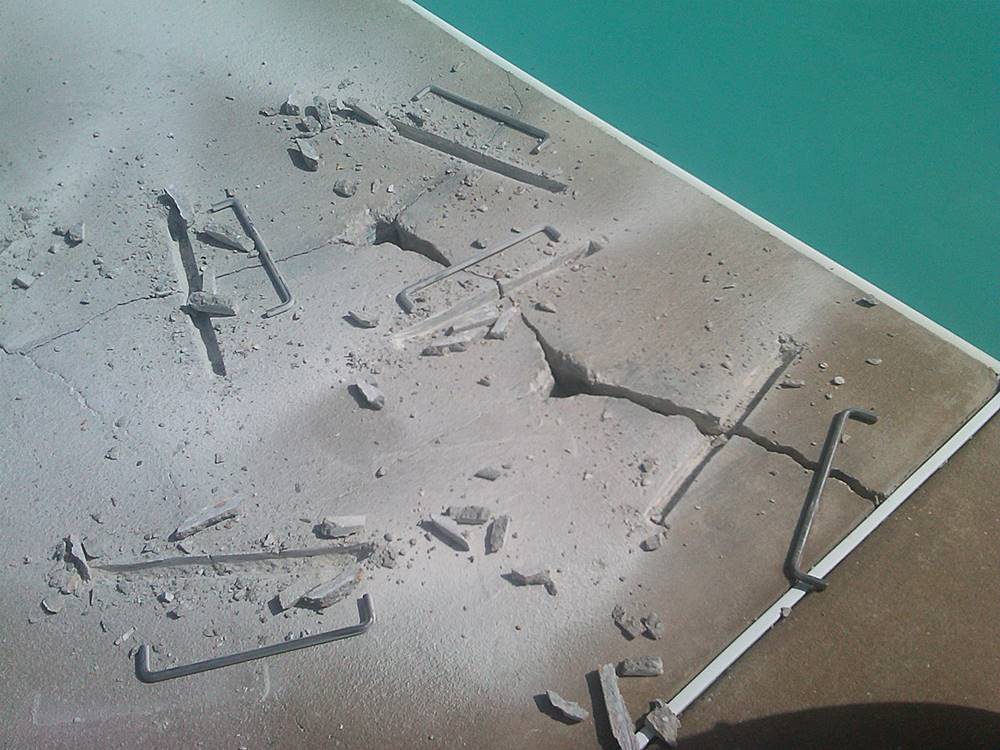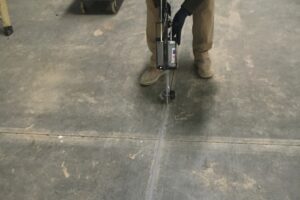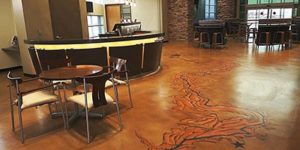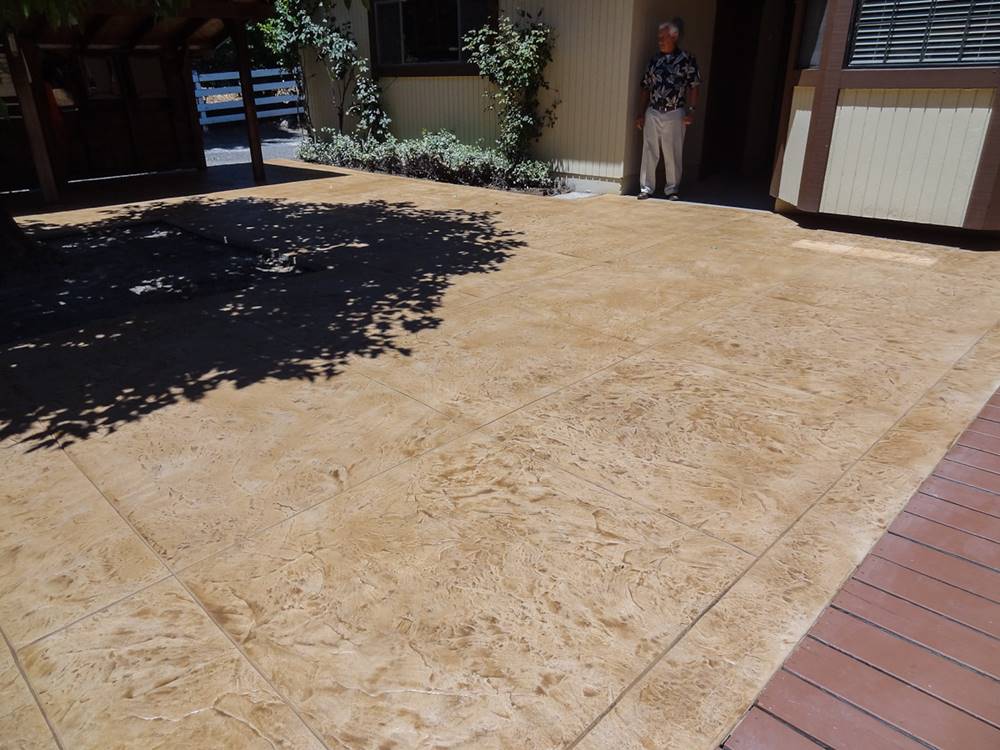
Photos courtesy of Allan Firestone
The Concrete Staple is my invention, an engineered piece of metal that bridges cracks to hold two pieces of concrete together. You can then install an overlay directly over the top, thus you will repair cracked concrete invisibly.
It works while other methods generally fail because it addresses the specific problems of cracked concrete.
The Staple is made from steel with a high-yield strength to overcome the incredible weight and pressures of 4-inch and 5-inch thick slabs of concrete. It’s placed across the crack to not only hold the existing crack together but also to keep the adjacent microcracks from failing and opening up.
It has right angle bends on each end to grip the concrete on either side of the crack. As a result, it does not have to depend on friction only to hold the two pieces of concrete together.
When installed, the Staple bonds the concrete together to counteract against the multidirectional forces that concrete slabs are subject to.
Finally, it’s factory-made from high-yield material. The angled ends have the necessary sharp bends to counteract springiness and are precisely lined up. This allows the stress to balance.
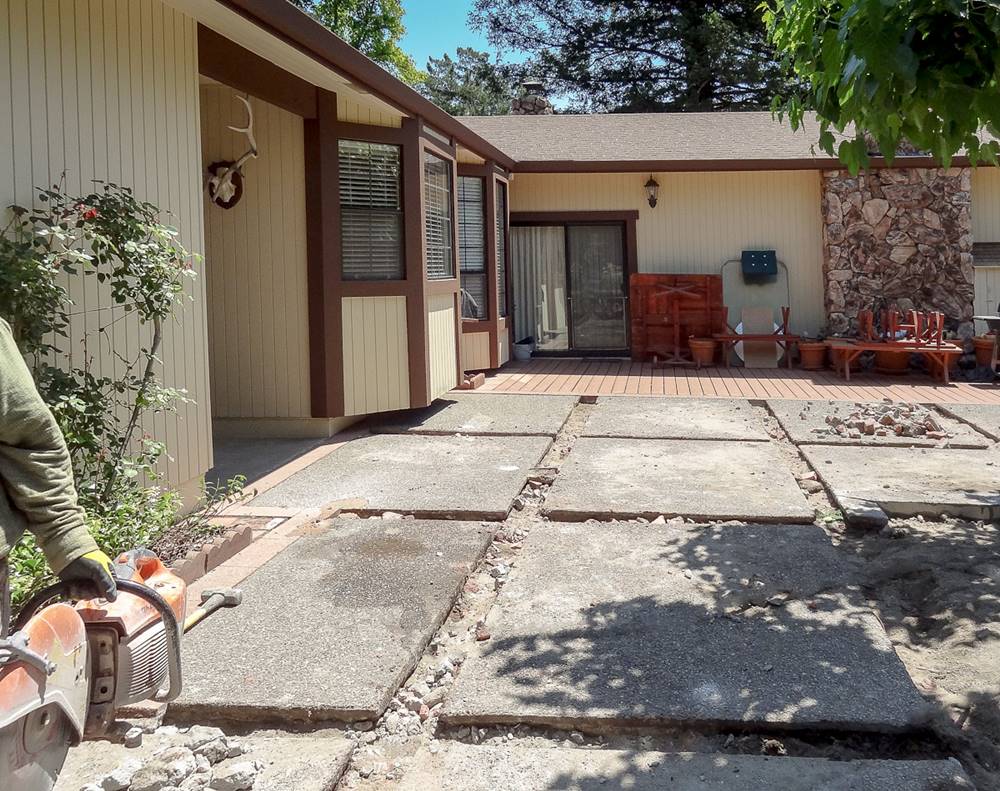
Critiquing the competition
One way to understand how and why my Staple works is to understand why competing methods eventually fail.
Take the fiberglass tape approach as an example. Concrete is extremely heavy. One yard of 4-inch thick concrete (about 9-by-9 feet) weighs more than 4,000 pounds. Concrete and the ground under it contract and expand with heat and cold, moisture and extreme dryness.
Driveways are also subject to thousands of pounds of vehicles going over them. How can we expect a small piece of fiberglass tape to hold all that weight together? When you think about it, common sense tells you fiberglass tape could not possibly work. And yet, even though it continually fails, some makers of overlay products still tell contractors to use fiberglass tape.
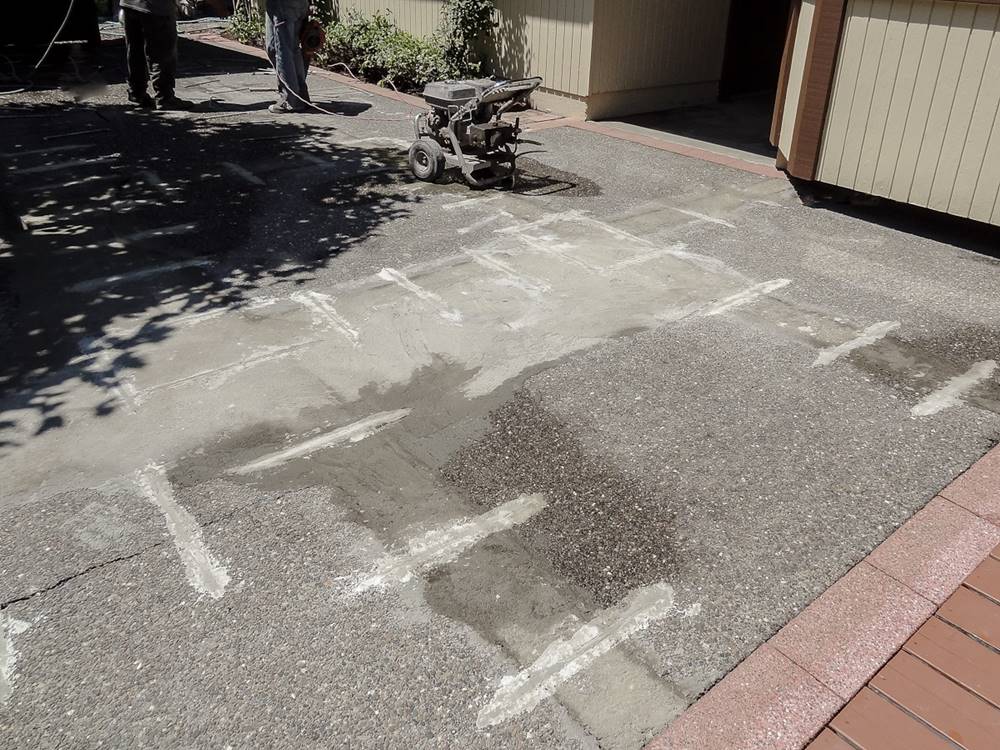
Check out epoxy
What about epoxy? Epoxy is super-strong, how could it fail? Once again, with a little knowledge of how concrete breaks and some common sense, you can understand the problem.
When trying to use epoxy to glue concrete together, we have to face some obvious facts. Not only is it nearly impossible to get the crack clean enough for good adhesion, it is very difficult to avoid having hollow areas in the epoxy between the two pieces of concrete.
However, even if you could overcome these problems, epoxy still doesn’t work consistently. Why? Because when concrete does break under pressure, creating a crack, there are a number of microcracks created by that same pressure, running parallel along the visual crack. The epoxy won’t actually fail, but adjacent microcracks will fail, usually on both sides, and it will appear as though the epoxy failed.
How about stitching with pieces of rebar? Like epoxy, stitching is a step in the right direction. It just doesn’t address all the problems you need to overcome to keep a crack in concrete from coming back. Stitching depends totally on friction. The epoxy and the piece of rebar have only friction to hold them from slipping. Over the years it has not proven to be consistently adequate.
Our Concrete Staple has a sharp bend on each end that acts like a double-ended foundation bolt. It doesn’t depend on friction only. In order to match the strength of those ends with friction only, you would need a considerable length of rebar on either side of the crack. Trying to match the strength of the Concrete Staple with long pieces of rebar would be too expensive and require too much work.
The secret of the bends
The Staple locks both the visual crack and the microcracks together. Like stitching, it goes across the crack, and we still advise using epoxy during the staple installation and in the crack itself. The Staple not only keeps the concrete from pulling apart, it also addresses the side-to-side, lateral and heaving pressures on concrete slabs. In short, it ties the concrete back together.
Why not simply bend rebar into the same shape and use that? We tried that. When I first thought of the idea of a steel rod with a bend at both ends, I went to the store to buy one. I was sure something like that had already been thought of. However, no one had them or had ever heard of anything like it. So I went to a steel fabricator and had them made. The fabricator decided we needed a very strong piece of metal with high-yield strength to do the job. They worked perfectly. However, they were rather expensive.
It turns out schedule 40 rebar doesn’t have the needed yield strength to do the job and grade 60 was too difficult to work with. Yield strength determines when the steel begins to stretch. When it stretches under pressure naturally, the crack opens up again. So when we ran out of the ones they had made, we decided to make our own out of 3/8-inch rebar. When those failed, we went to 1⁄2-inch rebar. They also failed. Working with a testing laboratory, we discovered the reasons for the failures.
Other problems
There was also a physical problem with the bends. The bend is round when you hand-bend rebar. This roundness allows for more stretch, which only helps the crack reopen under pressure. We were also advised that if the bends were not lined up with the preciseness of a factory right-angle bend you would lose even more efficiency of yield.
The final answer was to get a factory-made staple using a high-grade, high-yield-strength metal. Our Concrete Staple tests out at a higher yield strength than grade 60 rebar.
Questions from Readers
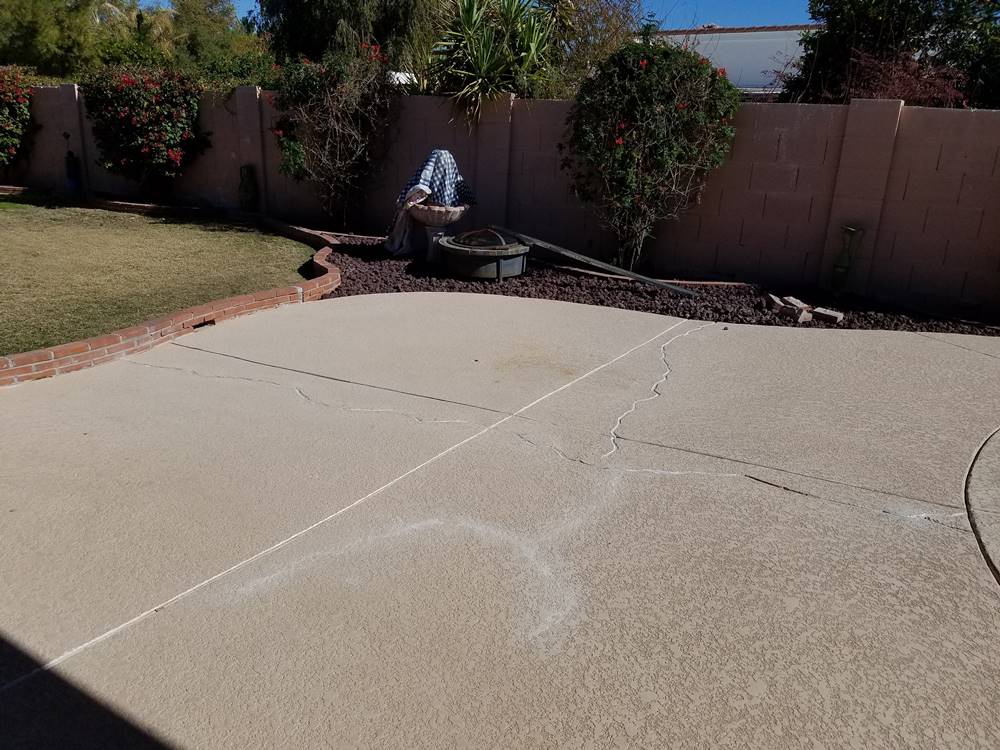 My pool deck was built without expansion joints and has cracks (please see pictures). These cracks were repaired first with Scotch weld epoxy (lasted approximately 2 years and then developed cracks). The second repair was done with flexible polyurethane, which lasted longer. However, I think there were cracks on the top pool deck texture. Currently, I am in the process of repairing these cracks. I opened these cracks with a diamond blade and filled with Sikaflex self-leveling polyurethane sealer. Also, I cut the expansion joints The sealer here was Sikaflex polyurethane sealer as well.
My pool deck was built without expansion joints and has cracks (please see pictures). These cracks were repaired first with Scotch weld epoxy (lasted approximately 2 years and then developed cracks). The second repair was done with flexible polyurethane, which lasted longer. However, I think there were cracks on the top pool deck texture. Currently, I am in the process of repairing these cracks. I opened these cracks with a diamond blade and filled with Sikaflex self-leveling polyurethane sealer. Also, I cut the expansion joints The sealer here was Sikaflex polyurethane sealer as well.
Please advise:
- If metal concrete staples (bonded with epoxy or concrete) will prevent cracking?
- If I add these staples, do I have to remove the polyurethane sealer and replace it with epoxy or concrete?
- What will be the spacing between these staples?
Answer from Concrete Decor
For starters, addressing the cracks and joints with a flexible joint caulk is good. Doing so eliminates water intrusion that can lead to slab movement. Sika products are a good choice as well.
Regarding the random cracking and the uneven deck surface at the joint, you have a couple of choices. First, in answer to your question, staples will stop the crack from any further movement. However, installing staples will require resurfacing the concrete in that portion of your pool deck. If resurfacing that area of the deck that has dropped in elevation is desirable, you’ll need to do the following:
- Properly grind the existing deck that needs resurfacing. This will ensure a good bond of overlay to the existing surface.
- Repair cracks with staples to eliminate future movement.
- Apply bonding primer.
- Then apply polymer-modified leveling cement.
- Apply a knockdown finish to match the existing deck around the pool.
- Apply a color coat to the repaired area and existing area to ensure a color match.
- Reseal.
I’m sharing these procedures with you so you can make a good decision about treating the existing surface as you have done in the past or taking a more holistic approach.



